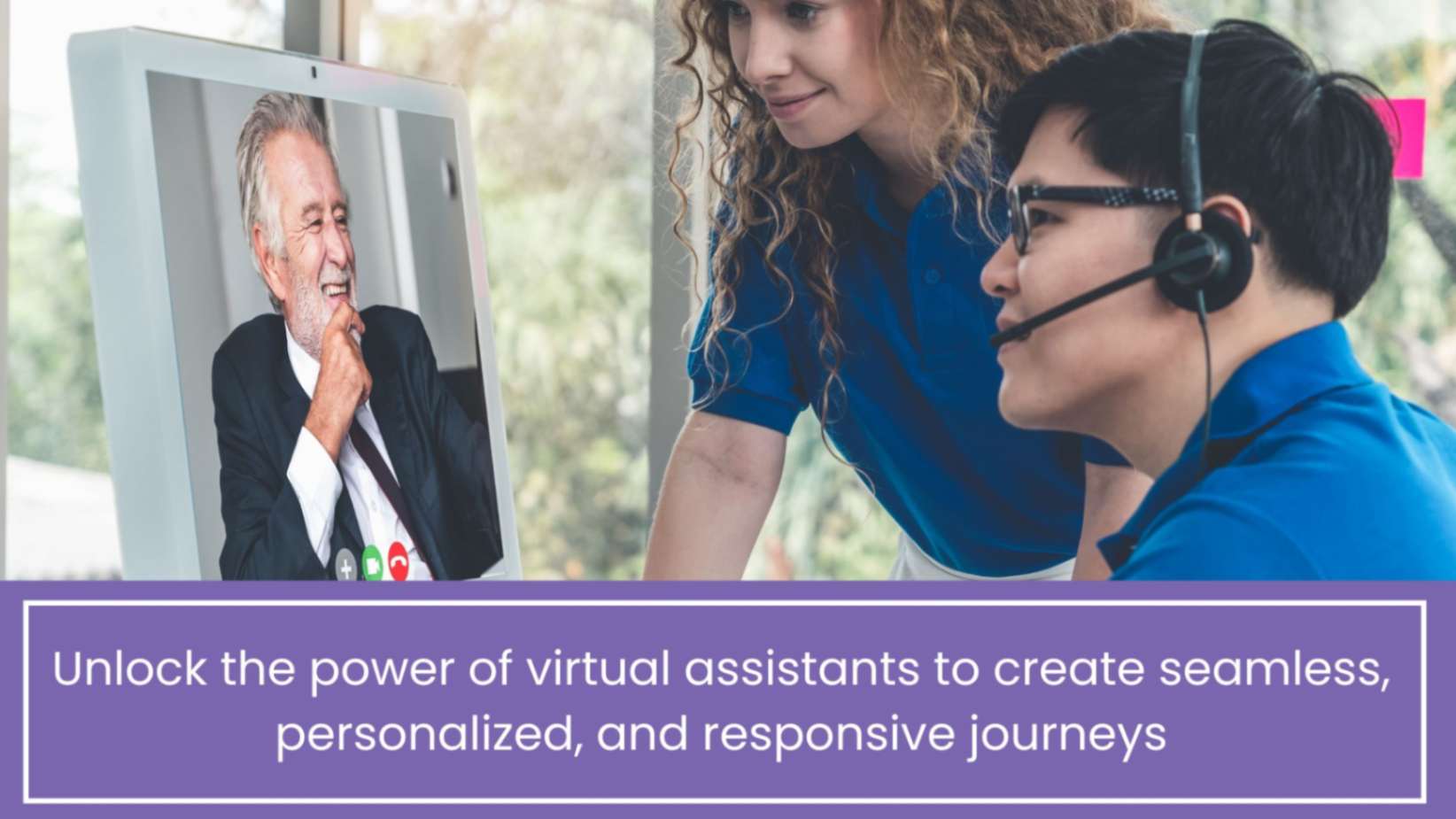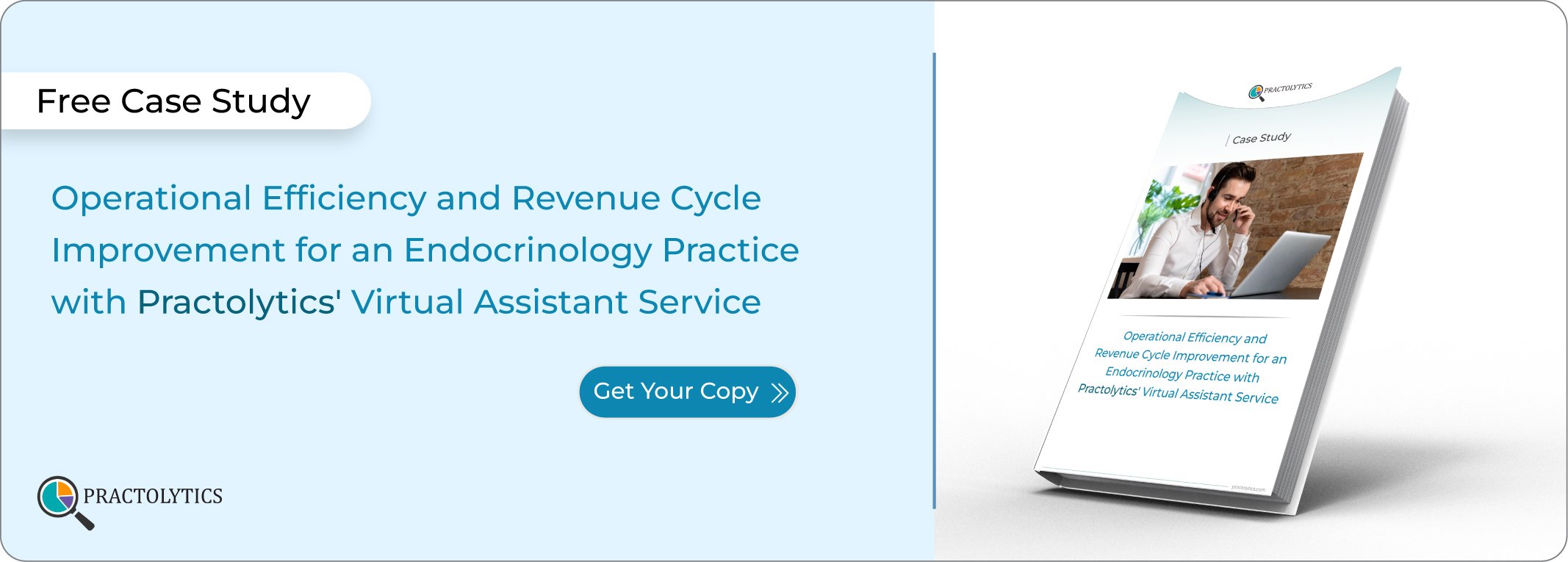How Virtual Assistants Enhance Patient Engagement and Satisfaction
By 2025, medical teams want to find out the answer to the question, How Virtual Assistants Enhance Patient Engagement and Satisfaction. These AI-powered assistants give instant answers, book appointments, and give reminders to keep patients engaged in their care. According to some statistics, about 72% of patients are fine using voice assistants to do things like prescription refills and scheduling. Virtual assistants facilitate and simplify various admin tasks so providers can concentrate on patient care, which, in turn, increases satisfaction. According to studies, communication is an important variable for patient satisfaction. We at Practolytics have seen chatbots engage with chronic care patients via daily check-ins and med reminders, keeping them in the loop between provider visits. Below we discuss some ways these assistants enhance communication and education
Table of Contents
10 Ways Virtual Assistants Improve Patient Engagement in 2025
- 24/7 Support and Information: Virtual assistants answer patient questions anytime (even outside office hours), reducing delays and anxiety . Patients can get immediate help on symptoms or clinic instructions without waiting.
- Automated Scheduling: AI chatbots handle appointment booking and changes via chat 24/7. At one center, shifting scheduling to an AI interface led to a 47% increase in digital bookings . Patients can find available slots and confirm or reschedule visits without phone holds.
- Medication Reminders and Adherence: Assistants send timely reminders for prescriptions and follow-up care, improving adherence . This keeps chronic patients on track with treatment regimens, which can significantly impact outcomes.
- Personalized Education: Virtual assistants deliver tailored health tips and educational content. For example, a diabetic patient might get AI-generated meal or exercise advice specific to their habits . Customized guidance keeps patients engaged and better informed.
- Chronic Care Support: AI records daily patient inputs for long-term conditions. Examples are blood pressure or glucose readings. Clinicians are alerted if the trend changes. Also, the tools give reminders for checking on patients and track symptoms throughout, allowing an early intervention when necessary.
- Multilingual Accessibility: Most virtual assistants are multilingual and multilingual assistive technology. The genuine queries can be asked in their own language or text-to-speech ad are really helpful to those who neither comprehend English nor are disabled.
- Reduced Waiting Time: On the routine tasks such as appointment reminders, form-filling, and some basic Q&A, the virtual assistant will block the line and automate many processes casuing a quick reduction in wait times for the customer and then amalating in better customer satisfaction.
- Patient Q&A and Self-Service: Virtual agents serve as ‘digital receptionists’ for common questions such as clinic hours, directions, and insurance information. They can also allow patients to check-in or complete forms online. This kind of self-service functionality empowers the patients while reducing administrative costs.
- Streamlined Follow-Up: AI handles follow-up care by booking post-visit appointments, sending rehab instructions, or notifying providers of missed visits . Patients receive reminders and education after visits, which increases adherence to care plans.
- Increased Bookings and Adherence: With easier scheduling and reminders, practices see more patients book and show up for care . For instance, one clinic reported far fewer no-shows after using an AI scheduling bot. Overall, convenience leads to more completed visits and happier patients.
Healthcare virtual assistants come in many varieties, from patient-facing chatbots to administrative schedulers . Each plays a unique role in patient engagement and satisfaction. For example, some chatbots pre-fill appointment forms, while others deliver medication reminders or educational tips.
Why AI-Powered Virtual Assistants Are Reshaping Patient Satisfaction
Patients report greater satisfaction when their needs are address quickly and efficiently. In surveys, over 70% of patients claimed to be satisfied with their interactions with AI virtual assistant. Hospitals with AI virtual assistants commonly see a 40% reduction in routine call volume, because that means less waiting time for patients and fast delivery of answers to their queries. From making appointment reminders and scheduling appointments to optional questions, virtual assistants streamline care delivery and improve the patient experience. This ease of use and reliability boost satisfaction since patients are grateful that they do not have to wait through long hold times or navigate a particularly cumbersome system to get the help they need.
Role of Virtual Assistants in Reducing Wait Times and Improving Experience
Long waits and overloaded phones frustrate patients. Virtual Medical assistants do away with such waits by undertaking front-desk duties. For instance, chatbots can collect patient information and confirm appointments, so that front-desk employees are not kept tied up on the phone. Epic’s experience is that AI can ahead of time collect symptoms, so when the patient is actually in the physician’s office, a clinician sees all the relevant data immediately. Fewer calls and pre-triaged patients mean shorter lines and less crowding. Removing these time bottlenecks frees up more time to focus on care, ultimately increasing the overall patient experience.
How Healthcare Chatbots Keep Patients Informed and Engaged
Clear, continuous communication keeps patients on track. 95% of providers agree that good communication is linked to higher satisfaction . Virtual assistants deliver on this by answering questions in plain language and keeping patients in the loop. They can explain lab results or complex terms in simple words , or help patients refill prescriptions through a portal without calling. Chatbots also proactively message patients with health tips or next steps. By making information always available (for example, on a website or app), these AI tools keep patients engaged between visits, so they feel supported and informed throughout their care journey.
Enhancing Chronic Care Management with Virtual Assistants
Chronic conditions require continuous care, and virtual assistants can act like digital health coaches. They regularly check in with patients on long-term treatments – for instance, reminding a heart patient to take blood pressure readings or a diabetic to check glucose and log meals . AI bots integrate data from wearables and alert clinicians if something changes . This means issues can be caught early, preventing costly complications. For example, if a patient logs high blood pressure, the assistant can flag it for a follow-up call. These personalized reminders and remote check-ins keep chronic patients engaged and help them stick to their care plan, improving outcomes and satisfaction over time.
Can Virtual Assistants Replace Human Touch in Healthcare Communication?
While AI assistants add efficiency, they don’t replace empathy and human judgment. In fact, experts emphasize that “AI isn’t a doctor” . AI should support staff, not make final clinical decisions. For example, if an AI chatbot advises on a symptom, a human should verify that advice before acting. Virtual assistants excel at routine tasks and information delivery, but patients still need real doctors and nurses to answer complex concerns and provide emotional support. In practice, the best approach is a blend: let AI handle scheduling and FAQs so nurses and doctors have more time for one-on-one conversations. This way, the efficiency gains from virtual assistants improve communication and preserve the essential human touch in care.
How Virtual Assistants Help Increase Follow-Up Appointments and Adherence
Keeping patients on schedule with follow-ups is another area where AI shines. Chatbots can automatically prompt patients who missed a visit to reschedule, or send check-in messages after surgery. In one study, clinics using AI saw about 47% more appointments booked digitally . Virtual assistants also help patients adhere to instructions: they remind patients to take medications on time and fill out care plans. TechMagic notes that AI “books follow-ups, sends reminders, and keeps everyone in the loop” . By actively reaching out after initial visits, AI tools boost the number of completed follow-ups and help patients stay on their treatment plan, which raises satisfaction and health outcomes.
From Scheduling to Satisfaction: Virtual Assistants in the Patient Journey
Virtual assistants engage patients at every stage of care. A patient might first interact with a scheduling bot online to find an appointment . Before the visit, an AI reminder confirms their time and collects any intake forms. During the visit, chatbots can provide education (like explaining test results in simple terms ). After the visit, the assistant books follow-ups or answers new questions via secure chat. At each touchpoint, AI reduces friction: it makes booking easy, frees staff to spend time with patients, and provides instant answers post-visit. This end-to-end support streamlines the patient journey. When every step feels more convenient and informative, patient satisfaction naturally climbs.
The Psychology Behind Patient Satisfaction and AI-Based Virtual Support
At its core, patient satisfaction often comes down to feeling cared for and in control. Medical Virtual assistants address this need by providing timely, understandable help. For example, having an AI assistant available at midnight can reduce a patient’s anxiety in a crisis . When patients get quick, personalized replies (instead of confusing medical jargon ), they feel respected and listened to. According to surveys, clear communication and responsiveness lead to higher satisfaction . Psychologically, AI support gives patients a sense of continuity and attention: they aren’t left wondering what to do or who to call. This reassurance – knowing someone (or something) is always there to answer questions – builds trust and loyalty to the healthcare provider, improving the overall satisfaction score.
Top 5 Metrics That Show How Virtual Assistants Improve Patient Experience
- No-show Rate: Compare no-show rates before and after implementing a virtual assistant services. A drop in missed appointments indicates better scheduling reminders and patient engagement.
- Appointment Volume: Track scheduling volume – for example, the percentage of inquiries that become booked visits. One practice saw a 47% increase in appointments booked digitally via AI . More bookings, especially off-hours, signal improved access.
- Call Deflection: Measure reduction in inbound calls. Fewer calls means the chatbot is handling routine inquiries . This frees staff and usually correlates with shorter patient wait times.
- Patient Satisfaction: Use surveys or Net Promoter Score (NPS) to gauge satisfaction. Higher scores after AI deployment suggest patients appreciate the new technology . Completion rates for online check-ins or forms can also reflect engagement.
- Same-day/Ad Hoc Appointment Fulfillment: Track how many urgent or same-day slots are filled via the assistant . If the bot successfully books last-minute appointments and refills canceled slots, it shows improved patient access and loyalty.
Conclusion:
Virtual assistants clearly offer multiple ways to boost engagement and satisfaction: providing quick answers, personalized support, and reducing clinic waits. They free healthcare staff to focus on patients and make each step—from scheduling to follow-ups—smoother. Recent studies back this: one medical center saw a 47% jump in bookings via an AI chatbot and nearly a 40% drop in routine calls . At Practolytics, we guide providers in safely adopting these tools so patients stay informed and cared for. When integrated well, virtual assistants turn technology into happier, more satisfied patients.
Read More – From Chaos to Efficiency: A Small Practice’s Journey with a Virtual Assistant
Talk to Medical Billing Expert Today — Get a Free Demo Now!






